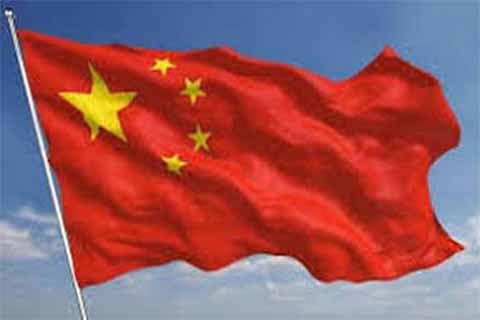If there is one thing that the post Cold War world has nurtured in its womb, it is unpredictability. Francis Fukuyama’s ‘The End of History‘ thesis–the proposition that there was no longer any overriding, ideological challenge to the United States–has fallen on its head. The arrival of the “Dragon”, on the other hand, has proven Napoleon right (“When China will come out of the slumber, it will astonish the whole world”). From Robert D Kaplan to Lee Kuan Yew, the rise of China has bewitched everyone. With its “Entity Diplomacy”, the One Belt One Road franchise, China is remoulding the geopolitical landscapes–far and near. Now the anticipated “mega deal” with Iran is its latest strategic move. Though China is still maintaining a measured silence over it, the cabinet in Iran has already approved it.
The Deal
Dubbed as “The Investment and Security Pact”, the $400 billion deal is a plan spread over 25 years (over 100 projects). It was proposed by Xi Jinping in 2016 during his Tehran visit. The nitty-gritty can be found in an 18 pages document obtained by The New York Times. It includes the establishment of Free Trade Zones in Iran, from Maku, in its northwest, to the strategically important Qeshm Island in the Persian Gulf. China will invest in Iran’s Banking and Telecommunication sectors, Ports, and Railways as well. Apart from extending the Chinese Navigation Satellite System, BeiDou, to Iran, the deal also talks about military cooperation, joint training, exercises, weapons development and intelligence sharing. Both the countries are also negotiating to bolster China’s new digital currency, e-RMB, to bypass the dollar. In return, Iran is supposed to supply oil to China for 25 years at a discounted rate.
The Backdrop
There are three factors that have provided a background to the making of this deal. First, a twist in the existing global unipolarity; second, the increasing tensions between China and the United States; and third, the crippling sanctions foisted upon Iran. Richard Haas, a well known American security expert, recently said, “from being a reluctant sheriff, the United States has now become a retired sheriff”. It is an echo of what the “declinist theorists” like Fareed Zakaria have been arguing for some time now. Whether we are living in a post-American world order or not can be debated, but it is true that both Trump and Coronavirus have accelerated the decline of American prestige. Trump’s rescission of JCPOA–thus pushing Iran to the brink–has on one hand incentivised China to fill the vacuum, while on the other forced Tehran to strike a kind of Faustian Bargain with Beijing. Moreover, the helplessness of countries like India and that of Europe has left Iran with no other option (the fallout of United States federal legislation, Countering America’s Adversaries Through Sanctions Act). Also the mechanisms like INSTEX (The Instrument in Support of Trade Exchange), the five European nations’ Special Purpose Vehicle to trade with Iran, have not borne any fruits.
Signals for India
Two geopolitical theatres are concomitantly at play around India. Towards west, the Eurasian theatre, dominated by Russia, China, Iran and possibly Pakistan. And towards east, the US centric Indo-Pacific theatre. It is the “Golden Ring” (China, Russia, Pakistan, Iran and Turkey) pitted against the “Five Eyes Alliance” (US, UK, Australia, New Zealand and Canada). Traditionally India has been resistant to definitive alignments. By maintaining strategic ambiguity, it has been able to keep its options open. But now India is in a strategic bind because the push has come to the shove. It is becoming increasingly difficult for India to abstain from taking sides. Buckling under US pressure, it has not been able to pursue its projects in Iran, like the development of Chabahar port (despite a waiver). It is also established now that India will no longer be a part of Chabahar-Zahidan Railway Project. There is even a talk of CPEC+, which aims to link Gwadar port in Baluchistan with Chabahar. In Harsh Panth’s words, this will undercut the strategic utility of Chabahar for India. There is yet another issue: China’s plan to develop a port at Jask, near the entrance of Persian Gulf–a chokepoint. This would be the latest in a series of ports being developed by China in Sittwe, Humbantota, Seychelles, Djibouti etc. (The String of Pearls), virtually circling the Indian subcontinent.
Conclusion(s)
It’s the middle powers that have a flair for manoeuvrability. Letting the big powers alone in their attempts to make big strides, there can be two sets of conclusions: one for India and the other for Iran. US, being adept at realpolitik, can even talk about something like G-2 tomorrow with China. Arms sales and security dominate US agenda. India’s objectives are quite different. Thus, India for its part should persist with its tradition of strategic autonomy and activate its regional diplomacy. By maintaining its perceptional advantage vis-à-vis China (owing to its open and plural democracy), India should reach out to Iran and mend the fences, now. Iran, on the other hand, should play its cards very deftly. Although the deal with China seems to have an implicit approval of the Supreme Leader Ayatollah Khamenei, there are fears running high among the people of Iran. Even Mahmoud Ahmadinejad and the exiled “Prince” Reza Pahlavi have cast aspersions on the deal. Given the few options that Iran has, it will be very interesting to see to what extent Tehran could condition the Beijing’s “open chequebook diplomacy” to its own maximum advantage. The biggest challenge would be to prevent itself from falling into the Chinese debt trap.
(The author is B Tech from NIT Srinagar, also JRF in Political Science and International Relations)






